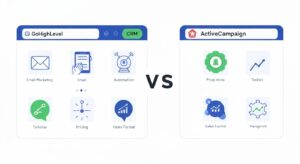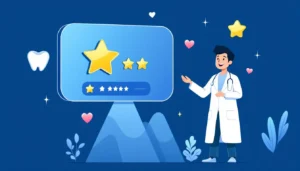From Retainers to SaaS: Scaling Agency Income Streams

Introduction
Project fees and contracts have been the main ways for companies to make money for many years. They have helped a lot of businesses, but they often cause growth to be unsteady and cash flow to be hard to predict. Keepers give you some security, but they still tie your income directly to the number of hours you work and the projects you complete. The hard part for agencies is coming up with ways to make more money without running out of time or workers.
These are the times when SaaS comes in. By using software-as-a-service methods in their own businesses, agencies can find new ways to make money and get around the problems that come with standard bills. The security of contracts and the scale of regular software payments can be combined with a SaaS CRM agency revenue model. Combine these two elements to make a base that is stable and flexible. This lets agencies grow in ways that weren’t possible before.
Leading sources like HubSpot, Harvard Business Review, and McKinsey have all pointed out that businesses with regular income streams are worth more, have more loyal customers, and can handle changes in the market better. Moving from contracts to SaaS is no longer just a choice for firms; it’s becoming a must for their long-term success.
The Limits of Retainers
With retainers, companies can plan ahead more than with one-time jobs, but they also have natural limits. People do the work for agencies, which costs money and time. This means that income stays tied to capacity. Most of the time, when an agency gets more fees, it has to hire more staff. This makes costs go up and profits go down
Another bad thing is that clients can back out of arrangements right away if they don’t see any more value. The government could lose money quickly because of this. Harvard Business Review says it can be risky to depend on a single source of income, even if it seems stable. This is because market conditions can change quickly.
With contracts, cash flow may be smoothed out more than with projects, but the real problem is that prices don’t change to match the extra money coming in. The agencies need to find new ways to make money besides people’s work if they want to grow past these limits.
The Rise of SaaS in the Agency World
Business technology to pleasure technology has all been changed by software-as-a-service. Companies that give their own SaaS products are beginning to see that this is a good way to run their businesses. With white-label CRM platforms, agencies can give their clients tools that they use every day for their business but carry their own brand.
How agencies make money will change a lot because of this. Agencies can charge for more than just services. For example, they can charge a fee every month or every year to access software. Adding a new client makes the base of regular income stronger, which has an effect that grows over time. HubSpot has shown that ongoing models lead to higher lifetime value and better customer engagement, both of which are important for long-term growth.
For agencies, SaaS isn’t about getting rid of fees; it’s about giving them another strong way to make money. It changes the business plan from one that requires a lot of work to one that can be scaled up, so growth isn’t limited by the number of hours in the day.
How SaaS CRM Creates Predictability
Because it turns uncertainty into steadiness, a saas crm agency revenue plan works. Traditional ways of making money often change depending on marketing, the time of year, or what clients want. Software payments, on the other hand, keep going month after month, no matter how many new jobs come in.
When clients use a CRM every day, it becomes part of their process, making them less likely to quit. Because they depend on it, agencies know they will always get money. It has been found by McKinsey that subscription-based businesses are always worth more than retail ones. They are more stable, that’s why.
Companies have a safety net with SaaS contracts as well. Payment plans help the business stay open even when contracts or work slow down. This gives agency owners peace of mind because they know they can plan for the future, hire new people, and look for ways to grow because they also know they will always have money coming in.
Combining Retainers and SaaS for Growth
Businesses that use both contracts and SaaS to stay open and grow do the best. When you use contracts, you can be sure of a steady stream of income from continuing to teach, run campaigns, or write content. SaaS, on the other hand, gives you an extra steady source of income that grows even when you work less.
When put together, these lines make a good model. SaaS contracts bring in more and more money over time, while retainers keep the business in touch with its customers. They usually have more money and can handle changes in the market better when they use this two-pronged approach.
HubSpot says that businesses that provide both one-time services and software that users can use over and over again tend to keep users longer and grow faster than businesses that only provide one type of service. For companies, this mixed method lets them bring in more money while still making money.
A Practical Example of SaaS Success
Think about a medium-sized marketing firm that used to only take contracts. Their monthly pay stayed the same, but they didn’t grow very quickly because each new client needed more staff. As part of what they offer, they added a white-label CRM system that lets clients handle leads, automate processes, and keep track of results while still using the agency’s name.
Forty percent of their clients signed up for the SaaS package within six months. The agency’s regular monthly income increased without having to pay a lot more for staff. Even better, clients stayed with the company longer because they relied on both the services and the tools.
McKinsey has seen this happen in many different types of businesses: regular income models not only help them make money, but they also make them more stable when times are tough. SaaS isn’t just a new tool for companies; it’s also a way for them to grow in the long run.
Why the Shift is Inevitable
Businesses that don’t change how they make money risk falling behind as the business world changes. Clients want more than just services; they also want tools that work with their business. When an agency offers both services and software, it turns into a strategic partner instead of a seller that can be replaced.
This is called “building a compounding advantage” by Harvard Business Review. When agencies add SaaS on top of fees, they build momentum that lasts year after year. Each contract builds on the last one to make the base more stable, and each retainer adds to that base by providing ongoing services.
Customers are more likely to stick with you because they need the service, which means you make more money. People who are still doing things the old way are taking a big chance: competitors who switch to SaaS will get more clients and grow faster than them.

Conclusion
When you switch from fees to SaaS, you don’t just change how you pay for things. It changes how businesses run, how they grow, and how they help customers. There is some safety in contracts, but they can’t give agencies the room to grow that they need to do well in a competitive market. With SaaS, you may create money that increases over time. Even when production on a project slows down, the money continues rolling in.
A saas crm agency revenue plan may help a business become more solid, be ready for quick growth, and remain secure as the market evolves. Three well-known business magazines—HubSpot, McKinsey, and Harvard Business Review—have all shown that a steady flow of cash is what keeps a company going. Using both SaaS and contracts is not just a chance for firms; it’s the next step in growth.
People who make the change see themselves as both technology partners and service providers. They build businesses that are stable, scalable, and necessary. The bodies that use this plan now will be the ones in charge tomorrow.







